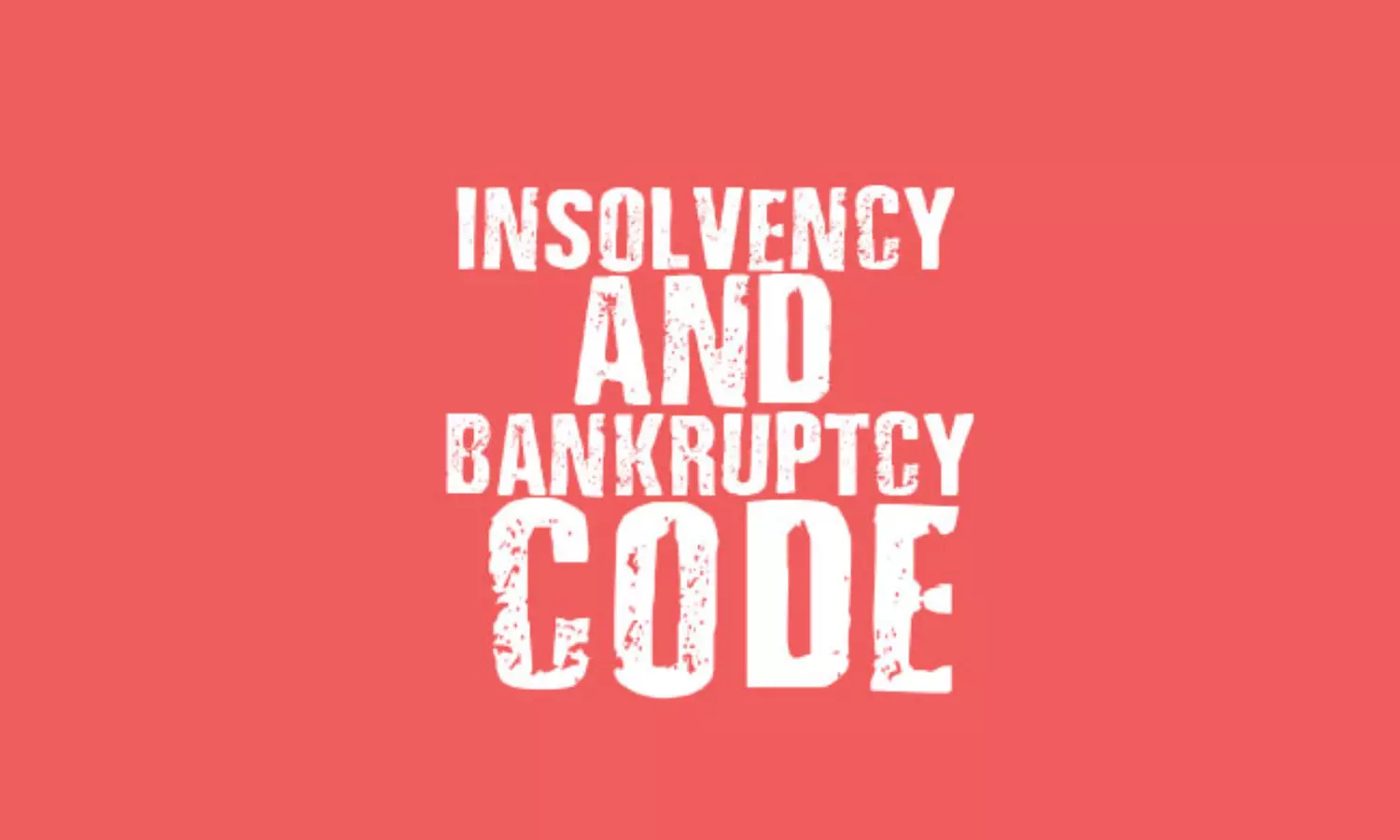
As per Section 12 of the Insolvency and Bankruptcy Code, 2016 (hereinafter referred to as "Code"), Corporate Insolvency Resolution Process (hereinafter referred to as "CIRP") should be completed within 180 days from the date of admission of application by financial or operational creditor to initiate such process. However, this period can be further extended to maximum 90 days, provided...
As per Section 12 of the Insolvency and Bankruptcy Code, 2016 (hereinafter referred to as "Code"), Corporate Insolvency Resolution Process (hereinafter referred to as "CIRP") should be completed within 180 days from the date of admission of application by financial or operational creditor to initiate such process. However, this period can be further extended to maximum 90 days, provided an application is filed before the adjudicating authority (i.e. NCLT) by the Resolution Professional (hereinafter referred to as "RP") upon instruction of the resolution passed at the meeting of committee of creditors (hereinafter referred to as "CoC") by an affirmative vote of 66% of voting shares, thereby making 270 days as the outer limit for completion of CIRP. It is to be noted that as per the first proviso to Section 12, extension of period of CIRP shall not be granted more than once. However, the second proviso inserted by way of an amendment made in 2019[1] stated that CIRP shall be mandatorily completed within 330 days from the insolvency commencement date, including any extension of the period of CIRP and time taken in legal proceedings in relation to such resolution process.
The first and second proviso of Section 12 of the Code when read in conjunction creates an ambiguity as to whether the period of CIRP can be extended beyond 270 days, as to do so an application for extension has to be filed before the NCLT 'more than once'. The two divergent interpretations may arise depending upon the intention of the legislature, which are as follows:-
- Given that first proviso is not deleted intentionally and has to be followed to the letter then it may be deduced that it is mandatory to complete CIRP in 270 days and additional 60 days time limit is exclusively reserved for the completion of legal proceedings in relation to such resolution process;
- In case the first proviso is not strictly followed then it may seem that the 330 days time limit is an overall upper limit for completion of both, CIRP and legal proceedings in relation to such resolution process, and no separate time limit has been prescribed for completion of both, in which case, the first proviso will become redundant.
Now, the question arises whether in a situation as given below, will NCLT extend the deadline or will it order the company to go into liquidation as the CIRP completion date has been overdue:-
In a CIRP of a company, where all legal proceedings in relation to resolution process are completed, on 179th day of CIRP, RP upon the instruction of CoC approaches NCLT for extension of 60 days and NCLT grants the extension. Thereafter, CoC and RP realizes that they need maximum 60 more days to complete CIRP. In this scenario, CIRP will be completed within 300 days of its initiation provided that NCLT grants the extension second time.
Now, if any such situation arises, how one is suppose to interpret the section in order to determine the period of extension.
The Supreme Court in the case of Surendra Trading Company v. Juggilal Kamlapat Jute Mills Company Ltd. [2], while holding that the timeline mandates under section 7(5) or 9(5) or section 10 (4) of the Code are directory and procedural in nature, has accepted that it is well-settled principle of law that where 'Adjudicating Authority' has to perform a statutory function like admitting or rejecting an application within a time period prescribed, the time period would have to held to be directory and not mandatory. Furthermore, the apex court held that a provision in a statute which is procedural in nature although employs the word "shall" may not be held to be mandatory if thereby no prejudice is caused.
In the matter of Rave Scans Pvt. Ltd.[3], NCLT, principal bench while deciding the fate of company whose CIRP period exceeded 270 days timeline under Section 12, enunciated the principle that the act of court shall harm no man. The tribunal contemplated the aftermath in case the proceedings go beyond 180 or 270 days period, which is comparable to the corporate death. The tribunal stated that the only reasonable construction of the code is the balance to be maintained between timely completion of corporate insolvency process and the corporate debtor otherwise being put into liquidation.
In another relatively recent matter of Committee of Creditors of Essar Steel India Limited v. Satish Kumar Gupta and Ors.[4], the Supreme Court struck down the word 'mandatorily' in the second proviso to the section 12 of the Code and held it as being manifestly arbitrary under Article 14 of the Constitution of India. The Apex Court held that -
"The effect of this declaration is that ordinarily the time taken in relation to the corporate resolution process of the corporate debtor must be completed within the outer limit of 330 days from the insolvency commencement date, including extensions and the time taken in legal proceedings. However, on the facts of a given case, if it can be shown to the Adjudicating Authority and/or Appellate Tribunal under the Code that only a short period is left for completion of the insolvency resolution process beyond 330 days, and that it would be in the interest of all stakeholders that the corporate debtor be put back on its feet instead of being sent into liquidation and that the time taken in legal proceedings is largely due to factors owing to which the fault cannot be ascribed to the litigants before the Adjudicating Authority and/or Appellate Tribunal, the delay or a large part thereof being attributable to the tardy process of the Adjudicating Authority and/or the Appellate Tribunal itself, it may be open in such cases for the Adjudicating Authority and/or Appellate Tribunal to extend time beyond 330 days."
Hence, the above mentioned Essar Steel case has provided the much needed clarity to the interpretation of first and second proviso to Section 12 of the Code. It has provided a balanced approach by keeping into consideration the timely completion of the CIRP as well as the interest of the corporate debtor and other stakeholders, in whose benefit; the second and third provisos were inserted. Therefore, keeping all this in mind, it can be said that post 2019 amendment, the first proviso can be interpreted as procedural/directory in nature and the word 'shall' can be construed as 'may'.
Furthermore, it is also important to note if certain exceptional and unforeseen circumstances arise which makes an insolvency resolution process impossible then by the order of NCLT/NCLAT, the period of such exceptional situation could be excluded from the calculation of time period of CIRP. An apt example of this would be pandemic, i.e. spread of Covid -19. In the wake of this pandemic situation, NCLAT New Delhi took suo-moto cognizance of the unprecedented situation arising out of spread of Covid-19 virus and ordered that the period of lockdown (including extension of such period), where the registered office of the corporate debtor is located, shall be excluded for the purpose of calculation of the CIRP period under Section 12 of the Code in all cases where CIRP has been initiated and pending before the NCLT and/or, NCLAT.[5]
[1] Insolvency and Bankruptcy Code (Amendment) Act, 2019
[2] Surendra Trading Company v. Juggilal Kamlapat Jute Mills Company Ltd. and Ors., 2018 AIR SC 18; See also P.T. Rajan v. T.P.M. Sahir and Ors.,(2003) 8 SCC 498
[3] Rave Scans Pvt. Ltd., CA No. 628 (PB)/2018; See also Quantum Limited v. Indus Finance Corporation Limited, CA (AT) (Insolvency) No. 35 of 2018.
[4] Committee of Creditors of Essar Steel India Limited v. Satish Kumar Gupta and Ors., (2019) 16 SCALE 319.
[5] Suo Moto - Company Appeal (AT) (Insolvency) No. 01 of 2020.




